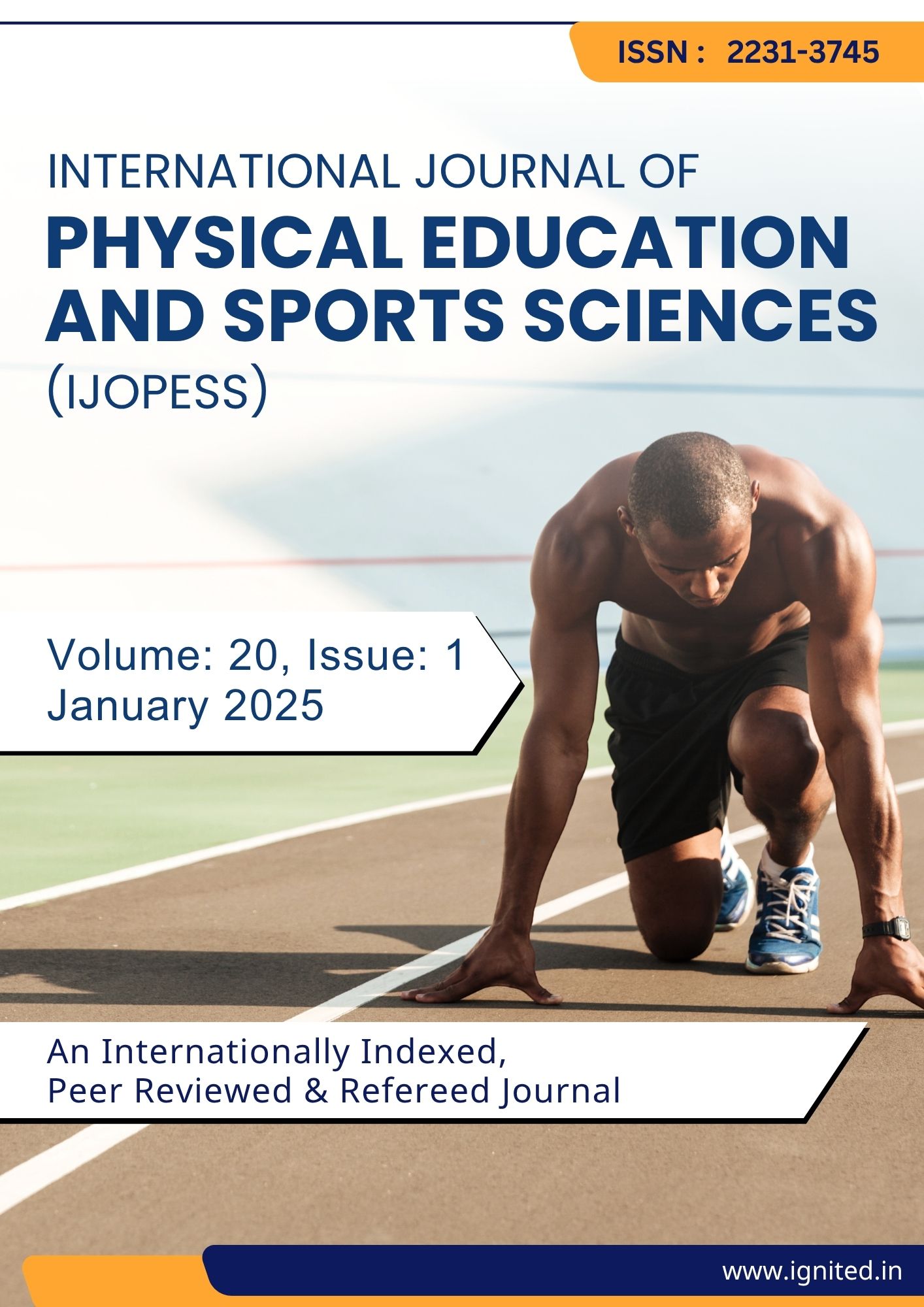Relationship of Foot Diameter in Relation to the Playing Ability of Female Basketball Players
Main Article Content
Authors
Abstract
This study investigated the association between female basketball players' anthropometric characteristics and their skill level. Hundred and fifty-two (N=152) female basketball players from the Punjab region who were 18–25 years old and held state-level positions were picked as subjects. One anthropometric measure—foot diameter—was chosen as the study's independent variable. Basketball coaches with the appropriate credentials subjectively analyzed the playing skill, which was considered- the dependent variable and the performance factor. The speed shot shooting test, passing test, control dribbling test, and defensive movement tests are the four dependent variables in this study. Purposive sampling was the method employed for selecting the subjects, who were all female basketball players from the Punjab region who attained state-level positions. The Pearson product-moment correlation was utilized to gauge the link between basketball paying skill and the chosen anthropometric characteristic. According to the results, the independent variable that was selected had a significant connection with the two dependent variables and an insignificant correlation with the other two dependent variables. A degree of confidence of 0.05 was considered appropriate for testing significance in every instance.
Downloads
Article Details
Issue
Section
References
- Meszaros, J., Mohacsi, J., Szabo, T., & Szmodis, I. (2000). Anthropometry and competitive sport in Hungary. Acta Biologica Szegediensis, 44(1-4), 189-192.
- Joseph, G., Timothy, A., Glen, L., & Thomas, M. (1998). Anthropometric and Performance Measures for High School Basketball Players. Journal of athletic training, 33(3), 229-32.
- Ahmad, S., & Nahid, A. (2016). Relationship between anthropometric characteristics and jump shot skill in female basketball players. European Journal of Physical Education and Sports Medicine, 2(6).
- Bašinac, I., Branimir, M., & Haris, P. (2009). Morphological characteristics of bosnian first league female basketball players. Faculty of physical education and sport Original scientific paper, 6(1-2), 20-25.
- Archana, C., Sushma, G., & Vijay, C. (2012). Predicting excellence in basketball: anthropometric and physiological attributes in elite indian female players. International Quarterly of Sport Science.
- Ahmad, S., & Nahid, A. (2016). Relationship between anthropometric characteristics and jump shot skill in female basketball players. European Journal of Physical Education and Sports Medicine, 2(6).
- Bujar, B., Artan, R., & Abedin, B. (2018). The influence of anthropometric variables in agility abilities of young basketball players. Sports Science, 11(1), 57-60.
- Emre, E., Gokmen, O., & Hurmuz, K. (2014). General Anthropometric and Selected Motor Skills of Elite Young Male Basketball Players According to Position on the Court of Players. Journal of Athletic Performance and Nutrition, 1(1).
- Karol, G., Anna, K., Kazimierz, M., Petr, S., & Martin, M. (2018). Anthropometric Variables and Somatotype of Young and Professional Male Basketball Players. Journal of Sports, 6(1), 9.
- Milena, T., Djordje, B., Slavica, D., & Milena, A. (2016). P-91 Anthropometric features of elite male basketball players regarding their playing position. British Journal of Sports Medicine, 50(1).
- Nikolaos, A., & Emmanouil, Z. (2015). The influence of the anthropometric characteristics and handgrip strength on the technical skills of young basketball players. Journal of Physical Education and Sport, 15(2), 330-337.
- Viswanathan, J., Nageswara, A., & Baskar, S. (2010). Anthropometric assessment of youth national championship basketball players in relation to playing position. British Journal of Sports Medicine, 44(1).

